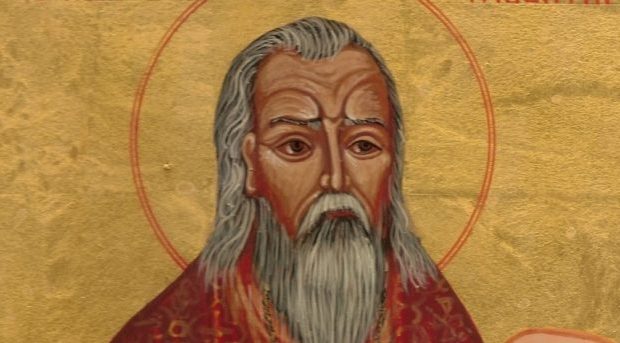Saint Valentine is venerated not only among Catholics, but also in the Orthodox and Anglican Churches. He was a bishop, and is the patron saint of those who are in love. But how did he go from being a Roman bishop to becoming a saint related to love and lovers? Historians claim Shakespeare had something to do with it: the bard, in his search for the secret of eternal love, stepped in the footsteps of the famous saint.
To understand this properly we need to visit the Italian city where Saint Valentine was born: Terni. There, Arnaldo Casali, the author of “Valentine, the secret of the saint in love” (Valentino, Il segreto del santo innamorato), accompanied us to the famous basilica where one finds the saint’s grave.
Casali (who was also born in Terni, in 1975) has a degree in Medieval History from La Sapienza University in Rome, and is the artistic director of the “Popoli e Religioni” Film Festival. He also collaborates with the Pontifical Council for the Family.
According to Casali, the reason this bishop is known worldwide as the patron saint of lovers is simple: his feast coincides with the Lupercalia, the ancient Roman festivals dedicated to fertility, which Pope Gelasius definitively abolished in 496. The Lupercalia was a probably even pre-Roman pastoral annual festival, which intended to purify the city from the influences of evil spirits who might prevent it from being prosperous and fertile. In fact, the day in which the festival was celebrated (February 15th), was called, in the original Latin, “dies februatus,” that is, “purified day,” which gave the month its name. Apparently, the Latin word for fever, “febris,” was associated in Etruscan with the notion of purging. By substituting this feast with that of Saint Valentine, Pope Gelasius somehow preserved the special festive character of the month.
But Casali also explains the association between Valentine’s Day and the “Holiday of Lovers” “comes to us through Shakespeare.” In fact, Shakespeare’s Julius Caesar begins with the Lupercalia: Ceasar himself tells Mark Anthony he must strike his wife, Calpurnia, to make her conceive. And it is not a coincidence either, Casali he points out, that a few steps from Verona -the city of Romeo and Juliet- one finds the town of Bussolengo, whose patron saint is, precisely, Saint Valentine.
Valentine of Terni (also knowns as Valentine of Interamna) was a young patrician who converted to Christianity, became a bishop at a very young age, and died a martyr at the age of 97. Born in Terni in 176, he was martyred in Rome on February 14, 273. He was persecuted for having fostered marriages between Romans and Christians. His martyrdom is described in the Martyrologium Herionymianum and in the Passio Sancti Valentini.

